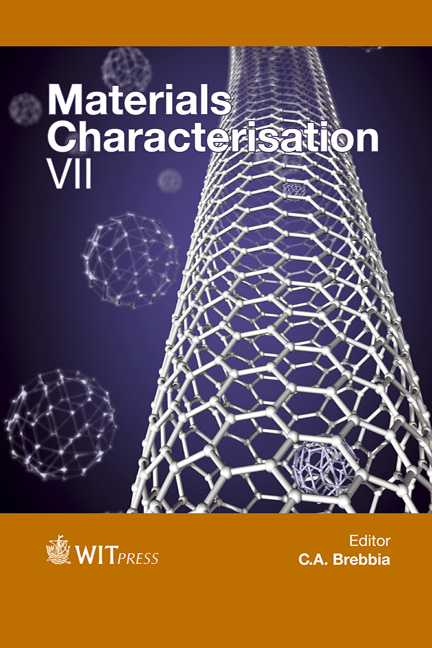Simultaneous Effect Of Surface Roughness And Passivity On Corrosion Resistance Of Metals
Price
Free (open access)
Transaction
Volume
90
Pages
13
Page Range
355 - 367
Published
2015
Size
910 kb
Paper DOI
10.2495/MC150321
Copyright
WIT Press
Author(s)
A. S. Toloei, V. Stoilov, D. O. Northwood
Abstract
Unidirectional surface roughness of varying magnitudes were created on both nickel and mild steel by grinding on SiC papers with grit sizes from G60 (roughest) to G1200 (smoothest) and the corrosion resistance in 0.5M H2SO4 solution was determined using a potentiodynamic polarization technique. A different trend of corrosion rate versus roughness was seen for the active-passive metal (nickel) and non-active-passive metal (mild steel). For nickel there was an increase in corrosion rate with increasing roughness, whereas for mild steel the corrosion rate decreased with increasing surface roughness. Furthermore, through a detailed examination of the surface before and after corrosion using techniques including profilometry, scanning electron microscopy (SEM) and energy dispersive spectroscopy (EDS), it was established that different corrosion mechanisms were operative for nickel and mild steel. For both metals, the smaller grit sizes produced a rougher surface with wider and deeper grooves. In the case of nickel, the higher roughness provided a greater contact area between the corrosive medium and metal and there was trapping of the corrosive ions in the deep grooves. Both of these factors would lead to an increase in corrosion rate. Also, for the smoother nickel surfaces, it is easier to form a stable passive film. For mild steel, which does not form a passive film, corrosion rates are generally much higher than for nickel. For the rougher surfaces with the deeper grooves, the corrosion product, FeSO4, can fill the grooves thereby acting as a barrier to further ingress of the corrosive ions to the un-corroded metal.
Keywords





